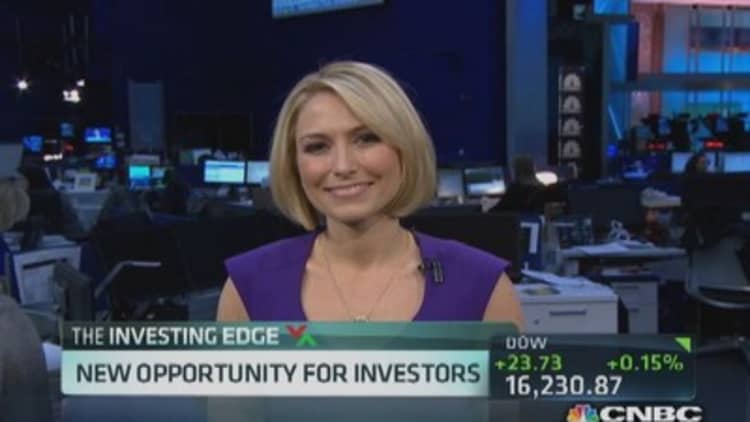
Bristol-Myers Squibb has gotten a lot of attention lately for its new cancer treatments. The so-called bio-pharma player has been a pioneer in immuno-oncology, recently taking steps to further expand the business.
But for all of the attention paid to its cancer drug pipeline, Bristol just scored a breakthrough therapy designation from the Food and Drug Administration for a treatment that targets hepatitis C.
Called DCV Dual Regimen, the therapy combines daclatasvir and asunaprevir to treat one genotype of chronic hepatitis C. The combo is being used in phase III clinical trials. A breakthrough therapy designation means the treatment shows marked improvement over more traditional drugs for life-threatening diseases. As a result, the FDA offers an expedited review process for approval.
The news underlines a larger trend of a promising new class of drugs that could fundamentally shift the way hepatitis C is treated. In addition to Bristol-Myers, but Gilead Sciences, AbbVie, Merck, Achillion Pharmaceuticals and Idenix Pharmaceuticals are working on offerings.
"Innovation in the field has dramatically improved the treatment options," said John Sonnier, a senior biotech analyst at William Blair. "New, highly efficacious, safe and tolerable regimens have already entered the market. Additional new regimens are also expected to do so in the near term."
(Read more: Private equity's Wild West play)
Hepatitis C is a virus transmitted by blood that affects the liver. When left untreated, it can cause cirrhosis and cancer. An estimated 4 million Americans have hep C, though recent publications suggest that another 1 million might be infected. An estimated 170 million people are infected worldwide.
Since the early 1990s, treating hepatitis C has been a harsh and tedious process, with somewhat hit-or-miss results. Traditional approaches have typically involved interferon, which is injected and can cause an assortment of unpleasant side effects. Depending on the strain and combination used, treatments can last from six months to a year. The cure rate has been relatively low, as well—somewhere between 50 percent and 60 percent, according to Cowen & Co. analyst Phil Nadeau.
The new combination protocols eliciting the most excitement consist of "all-oral" regimens of pills that do away with interferon injections for certain strains and seem to have much fewer side effects.
The treatment time frame is markedly shorter, too—two or three months. And while it's still too soon to tell whether some patients will have to return for additional rounds, cure rates could be above 90 percent for the most promising therapies.
(Read more: )
"The goal is to provide an all-oral, once daily, safe and tolerable regimen with a high cure rate for as little as eight to 12 weeks for all patients," Sonnier said. "That goal is within reach. ... It has the potential to gain significant market share and can command a price premium versus existing therapies."
The FDA is expected to approve a number of treatments this year. AbbVie, which partnered with Enanta Pharmaceuticals, disclosed positive results for the remaining phase III studies tied to its all-oral regimen, which also has breakthrough therapy status. Analysts believe it could hit the market in the fourth quarter.
Bristol-Myers' breakthrough therapy is expected to gain approval in Japan before the end of 2014.
Gilead Sciences' first offering, Sovaldi (sofosbuvir), was approved in the U.S. in December. Early demand has been stronger than analysts expected, and many have begun revising their sales projections for Sovaldi's first year on the U.S. market. Sonnier estimates sales of $3 billion in 2014, and Nadeau has a target of $4 billion.
(Read more: Why GSK sales shift is a turning-point for pharma)
Mark Schoenebaum, analyst at ISI, recently created a chart based on prescription data from IMS Health. According to those numbers, sales of Sovaldi could climb above $5 billion this year—which would make it the most successful drug launch ever.
Gilead has a second hepatitis C combination therapy using sofosbuvir in late-stage development. Analysts anticipate that could come to market as soon as the third quarter.
Why is a disease that affects roughly 4 million Americans now showing such promise for profits? After all, more traditional therapies have together generated worldwide sales of $5 billion to $5.5 billion annually.
"The biggest change will be treatment volumes," said Nadeau at Cowen, noting that these new therapies also command a small premium.
In the past, 35,000 to 40,000 people in the U.S. underwent treatment annually. Those numbers were even lower last year, as many would-be patients chose to wait until these newer therapies could be used.
"We expect that number to increase to over 100,000 a year when these regimens become available," Nadeau said. "So you're looking at a doubling, maybe even a tripling of patients."
—By CNBC's Morgan Brennan. Follow her on Twitter @MorganLBrennan


